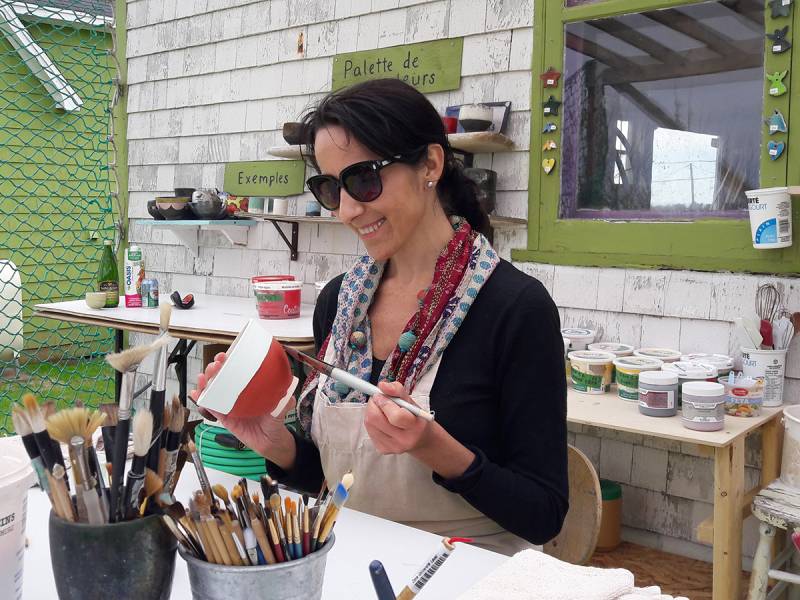CTN: “We are moving from monographic tourism to a multi-stakeholder concept!”

Talking about tourism is always a tightrope because at the same time as we are tourists on our holidays, we are also residents of a place that is receiving tourists – and that is why the desires and motivations of each of these confluent roles often clash. Creative Tourism intends to refute this line, considering a new generation of tourism that involves tourists and local populations in the co-creation of the tourism product closely linked to a circular economy. Interestingly, this idea is also gaining a lot of traction in the events and meetings industry, as associations have much more to gain from involving communities and local actors in conferences and congresses.
The Creative Tourism Network (CTN) was founded in 2010 as a non-profit organisation to attract new generations of travellers around this distinctive concept of creative tourism, as well as to create a value chain for territories ranging from rural communities to megalopoli. We spoke to the network's Founder and Director, Caroline Couret (cover photo), about this brave new world for creative tourism.
1) Is there a before and after pandemic concerning the co-creation of business travel and creative tourism?
In 2004 when we started the platform in Barcelona, the romantic idea of walking in the tourist footsteps in Tuscany was still very much alive, but it quickly gave rise to new travel segments such as remote tourism, gastronomic tourism and, precisely, MICE travel. A destination that wants to host conferences and congresses can create a greater impact with this type of exclusive and authentic experiences. Regarding COVID-19, this evolutionary trend was in fact accelerated by the restrictions of that time, as the only possible tourism was designed for smaller groups. COVID protocols required groups of ten people to secure health recommendations and profit margins were also calculated from this number, as several destinations were limited by the rules in place. Consequently, tourism players had to think creatively to draw the local population into modalities such as staycation. In this sense, they began to reinvent existing activities that could be organised for groups of families or friends, finding one- or two-day experiences confined to a limited space, many of which remained after the pandemic.
.jpg)
2) When we talk about value for a tourist destination what are we really talking about?
The common point is the vision of creative tourism not only to recover the assets that tourism has developed in the last decade, but as a lever for sustainable development. This means that through a baseline that favours inclusion and engagement with local communities (farmers, artisans, etc.), it is possible to strengthen a segment that effectively contributes to a unifying ecosystem for the territory. It is now very clear that we are moving from a monographic tourism − where activities were dependent on a small number of companies − to a concept involving multiple stakeholders. Ultimately, they are the ones who will provide affordable experiences with knowledge transfer and human values to drive this peer-to-peer relationship. Co-creation will only work if all stakeholders are really committed to the final delivery. This will ensure the preservation of the intangible heritage and DNA of the destination, but also the same revenues that will be distributed equitably among these communities.
"We are entering a different dimension from the last decade, in which the emphasis was more on validating the tourism product with the same offers and models of all the major cities in Europe."
3) What kind of intervention has the CTN undertaken with its members to prepare destinations for this new era of creative tourism?
What we do first with each destination is to identify all the assets in terms of natural, cultural and historical resources since many of them are not even aware of the potential they have at hand. We bring together all interested parties in order to co-create with them experiences that can fit into different travel profiles. What can be a differentiating element for destinations when hosting large congresses and conferences, for example. It is also important to co-create the destination storytelling to avoid the traps of the past aimed at mass tourism. Instead, we have opted for organic narratives that maintain close relationships with communities. By instance, we welcomed the city of Cannes into our circle last month who saw us as a key player in bridging the gap that exists between this idea of luxury tourism and local communities. In this way, event managers and planners can learn how to integrate major assets such as the renowned Film Festival into a circular economy that includes local communities as a whole.
4) How is it possible to preserve a city’s cultural diversity as well as its authenticity in this global age of tourism?
In this framework of creative tourism, I believe that the key to maintaining this authenticity is precisely to create uplifting experiences that can also be interesting for locals. The COVID-19 pandemic helped us a lot to analyse this process. A great example came from the city of Loulé (Southern Portugal), where artistic, cultural, or gastronomic activities were carried out to recover the traditions and customs of the Algarve (photo below). Thus, Loulé set out to present a more genuine Algarve by bringing visitors and locals closer together through its Creative Project. This has helped maintain activity during lockdown but also an authentic and reciprocal approach, as opposed to the throwaway environment that cities often slide into. It was very important to see how foreigners were attracted to these cultural experiences and how they capitalised on local communities in a reciprocal approach.

5) How are you seeing this tourism recovery in 2023 and its connection to the sustainable development goals and green regeneration of destinations?
Overall, sustainability has helped a lot to make decision-makers more open and to garner greater commitment to destinations. Our approach is based on projects with the public administration as an interlocutor, subsequently federating all stakeholders so that we can work together. This movement contributed a lot to our sustainable actions, transforming communities into agents of change and boosting the UN’s sustainable development goals at the local level. Perhaps this has accelerated in recent years due to the shock waves of the pandemic and the urgency of these new demands, but it is already happening. Jumping to the post-COVID period, we see that many travellers can use creative tourism to meet local demand and diversify their budget lines. In a way, COVID-19 helped us highlight the need for this kind of alternative, sustainable and creative model. The fact that people were led to visit their own areas, reinforced a new level of action by pushing consumers and suppliers to find some kind of singularity.
"The common point is the vision of creative tourism not only to recover the assets that tourism has developed in the last decade, but as a lever for sustainable development."
6) How do you see the future of business travel and destination marketing based on these notions of creative tourism?
We are entering a different dimension from the last decade where the focus was more on the validating the tourism product with the same offers and models of all major cities in Europe. I believe that we are already feeling this evolution in an intersectional distribution. Which is great, because for years we have been fighting for these two facets of culture and tourism to converge more actively. In several countries and, above all, through common policies of the European Union, we see that there is this will and determination to associate, for example, tourism with agriculture (as in Italy), or with the creative industries through very positive examples in Indonesia and Colombia. Decisions based on the need to diversify the reality and identity of each destination. As I have already said, large companies and tour operators are also following this path, diversifying their offer and opening lines of agrotourism, sketching, knitting or culinary tourism and so on.










